- Mar 21 12:24 pm
#87514
It’s possible to find up to 6 species of Grebes in the Lower Mainland. Most are present during the Winter/Spring seasons. Most are found in salt water during this time period, but also breed in fresh water and during breeding season migrate into the interior to nest in lakes. These are diving birds.
The Grebe most likely to be seen in many locations throughout the Lower Mainland is the Pied-billed Grebe. Some have nested close to Piper Spit at Burnaby Lake and I have seen pairs swimming in the outer ponds at Iona. It is the smallest Grebe in the area.
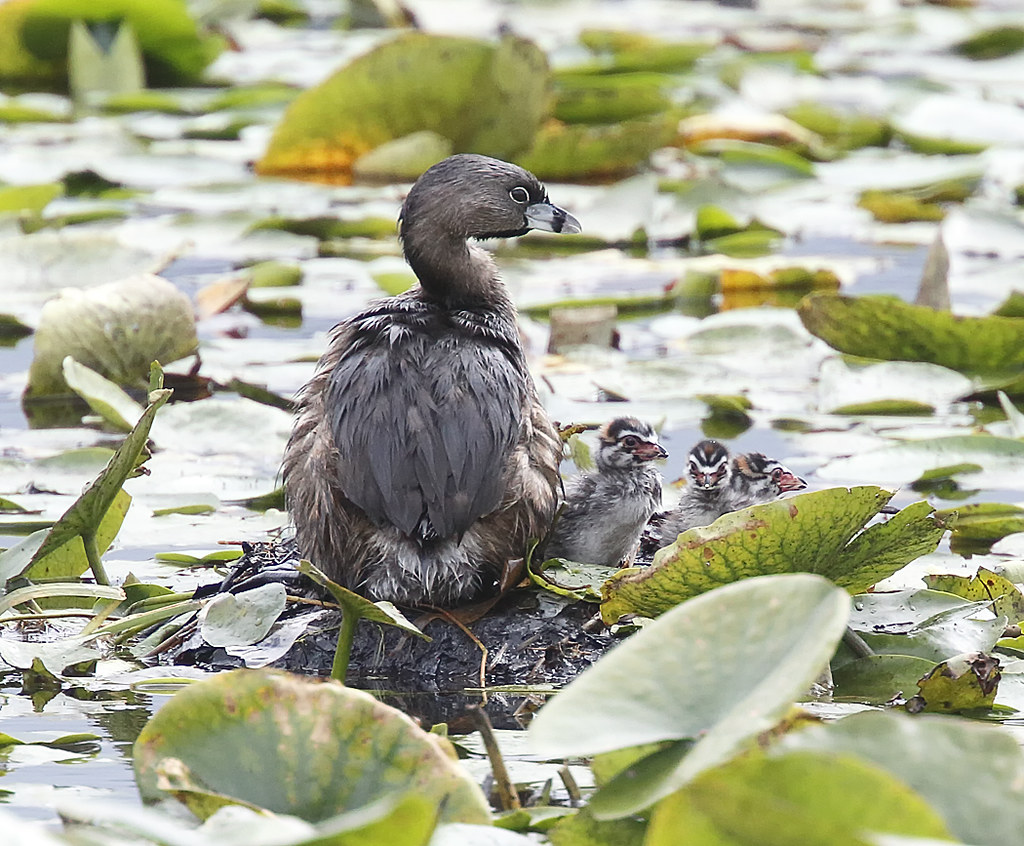
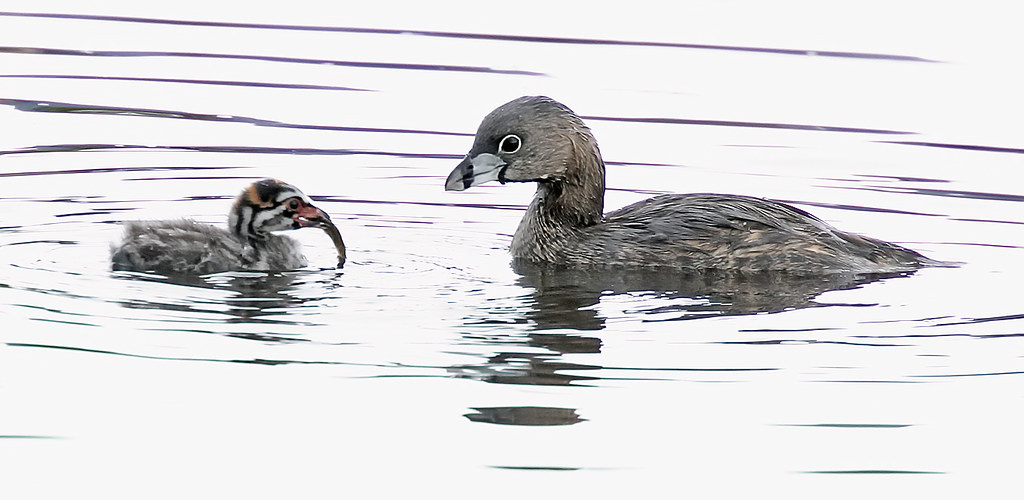
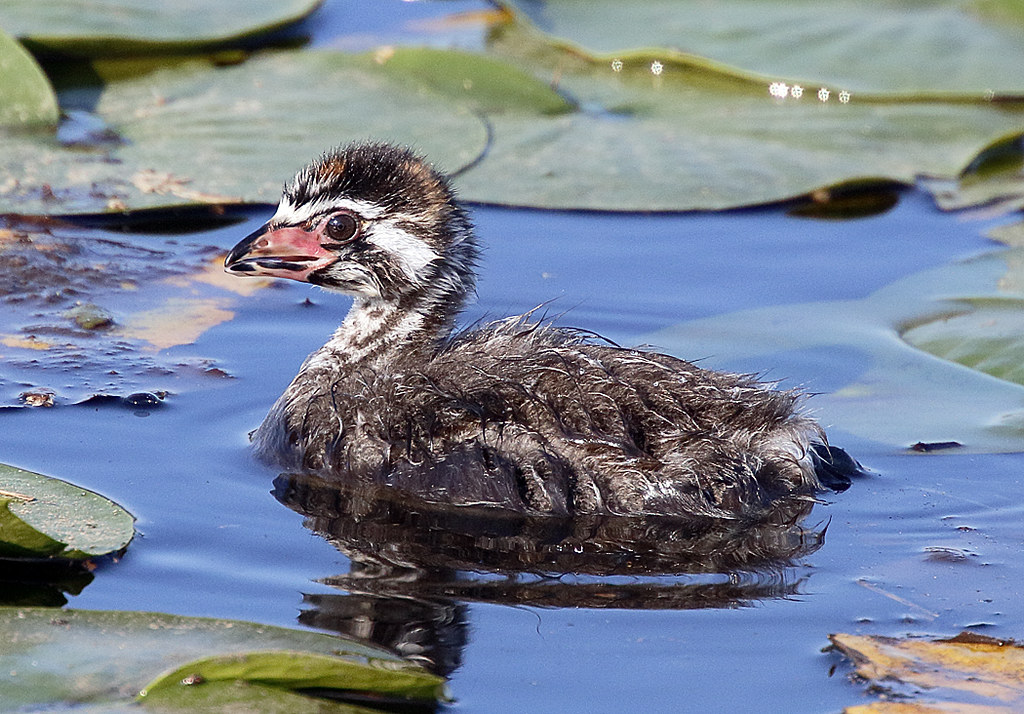
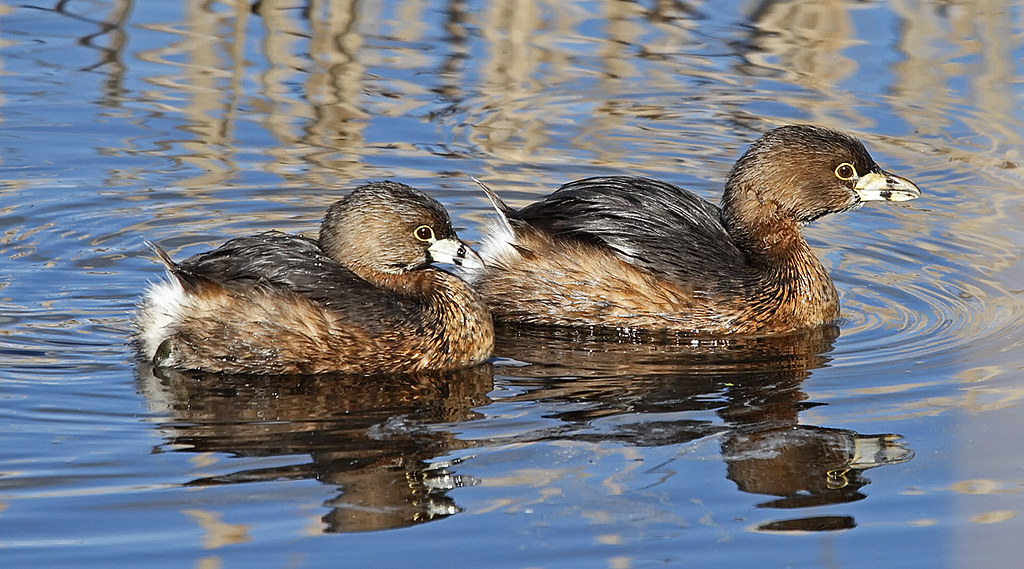
Another relatively common member of this family is the Horned Grebe. Currently these are present at the White Rock Pier and often come close to the Pier while diving for those green thingies they like to consume. These are curious birds and are very conscious of being looked at. They usually dive immediately when spotted. However, the don’t stay underwater for very long, so an observer can just wait them out. On one occasion, one followed me as I walked along the beach at Point Roberts. It was swimming about 10 feet from the shoreline and about 50 feet behind me. Whenever I turned around, it dove. However, after I walked some distance and turned around again, it was still following me – and still diving when I turned.
About this time of year, this species starts to show breeding plumage. During the Winter they are black/brown and white. However, their breeding colours are striking – black with gold horns. They migrate to their breeding lakes upon molting into full breeding plumage.

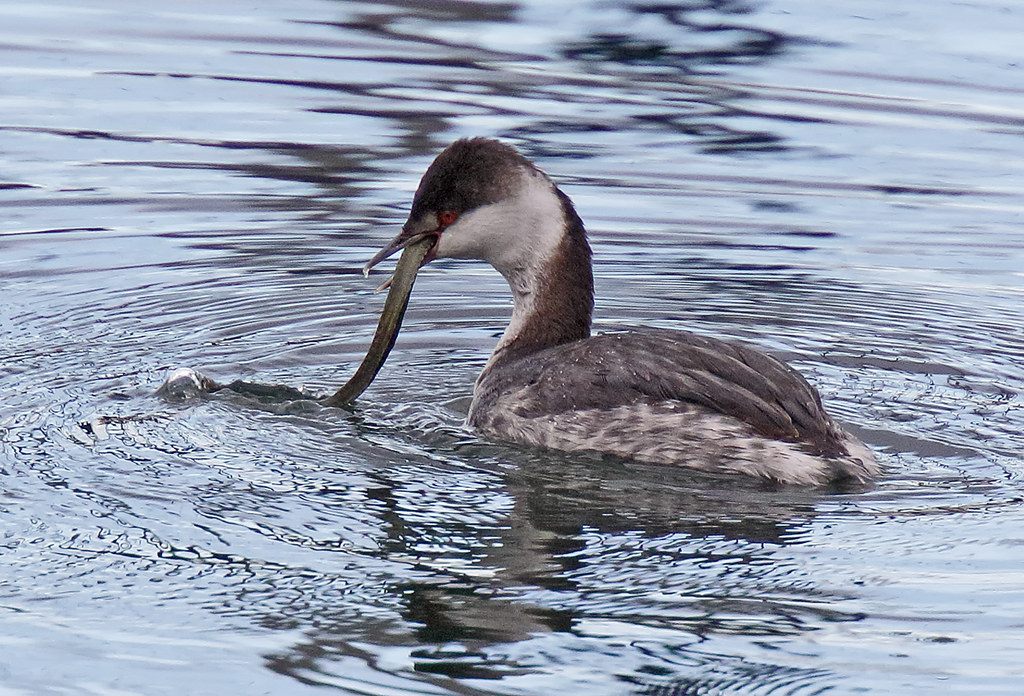


Another Grebe which looks similar to the Horned Grebe during the Winter is the Eared Grebe. It is slightly smaller, darker in colour, has a shorter bill, without the white at the end of the bill that the Horned Grebe has. This Grebe is relatively uncommon in the Lower Mainland. It frequents the same locations at the Horned Grebe. Its breeding plumage sports golden “ears” on a black body with red eyes. The breeding-plumage photos below were taken at an interior lake.


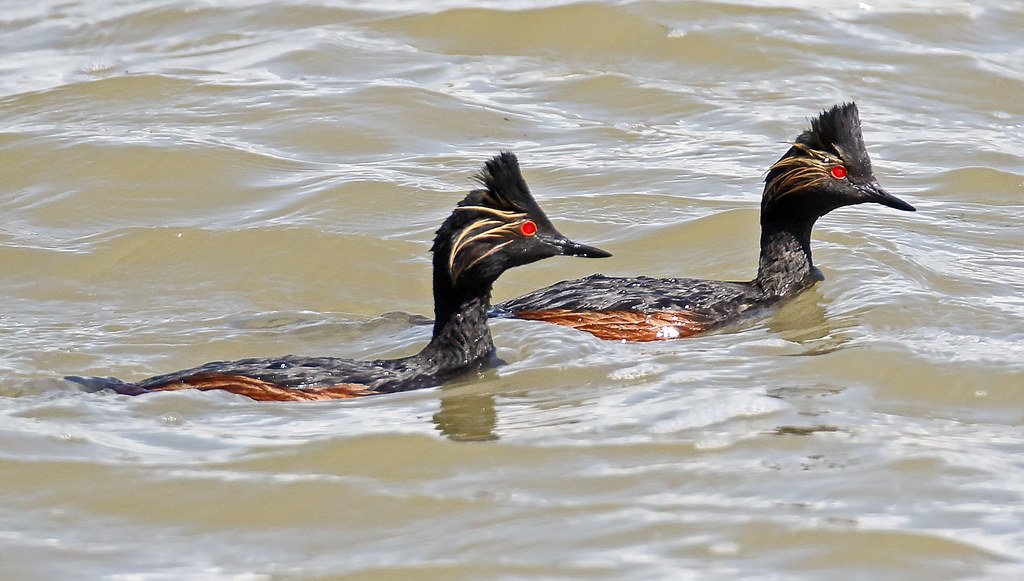

A larger Grebe that shows up at Blackie Spit, White Rock and Point Roberts is the Red-necked Grebe. During the Winter its neck most often appears a dirty gray. This Grebe also swims further away from the shoreline and its dives are longer and presumably deeper than the Grebes discussed above. About this time of year they begin to sport breeding plumage with their necks turning red and their bills more yellow. They linger for some time in the salt water before migrating to breeding lakes. Last year I caught a pair doing a mating dance at Point Roberts. They were turning and moving in unison and swimming higher up.

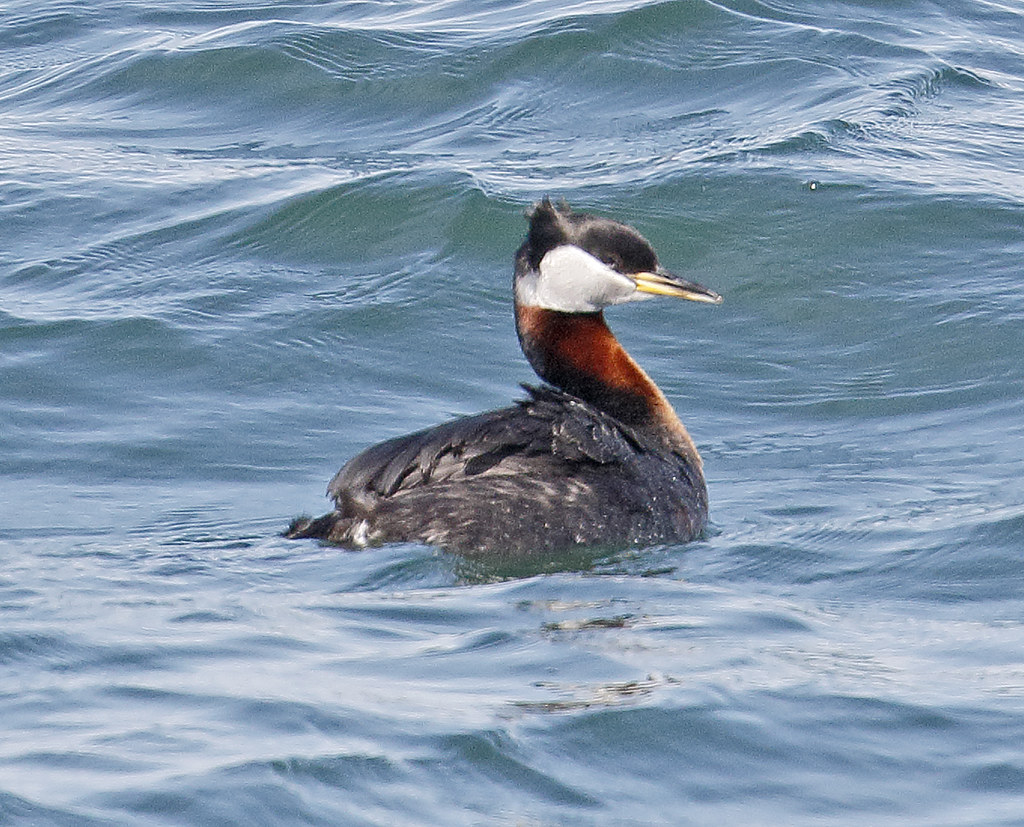
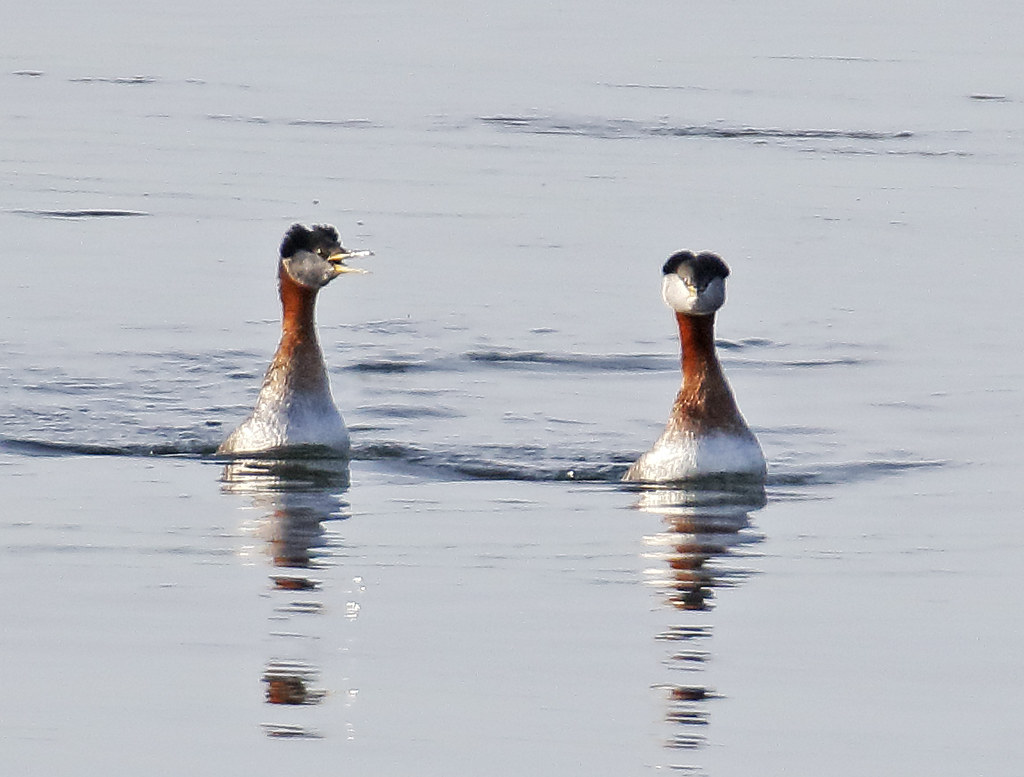
A Grebe which looks large is the Western Grebe. These also show up at White Rock, Point Roberts and Blackie Spit. They have long, skinny necks, a long yellow bill and a black cap. They often form large groups while migrating. One year I came across about 1,000 of them in Semiahmoo Bay, making haunting calls early in the morning. When resting, they don’t turn their heads back like most birds, but simply fold their long necks so that their head is still facing forward, but sitting on its back (which is shaped like a pie plate). Sometimes they come very close to the White Rock Pier. Once I caught one sleeping under the Pier. A year or so ago, there was some sort of food fish off the White Rock Pier and about 250 Western Grebes showed up to help harvest them.
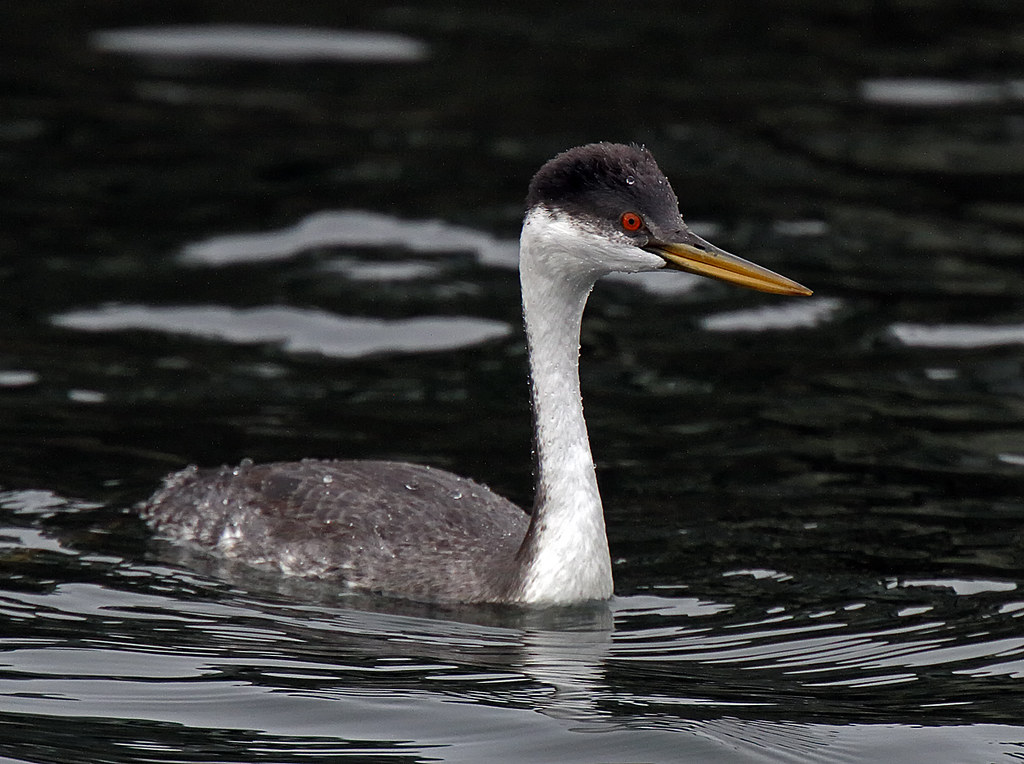
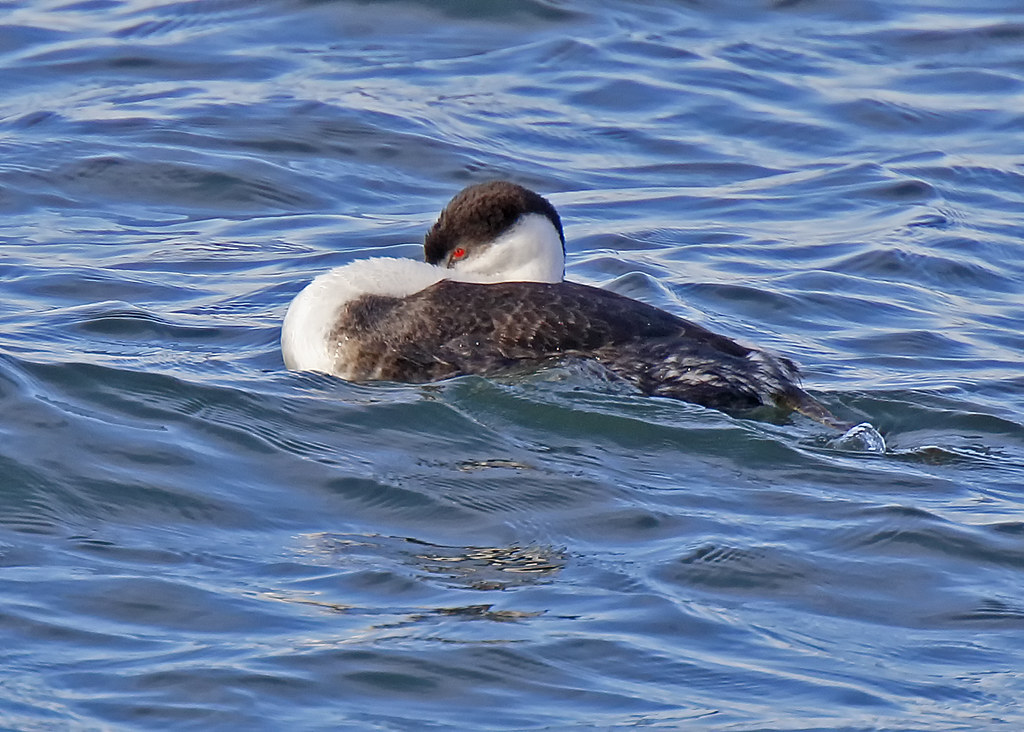

A Grebe that looks very much like the Western Grebe is Clarke’s Grebe. The most noticeable difference is that the Clarke’s has some white appearing over its eyes whereas the Western Grebe has just black in that location. During the Winter we do see the occasional Clarke’s Grebe in the Lower Mainland. Most often seen off the White Rock Pier.
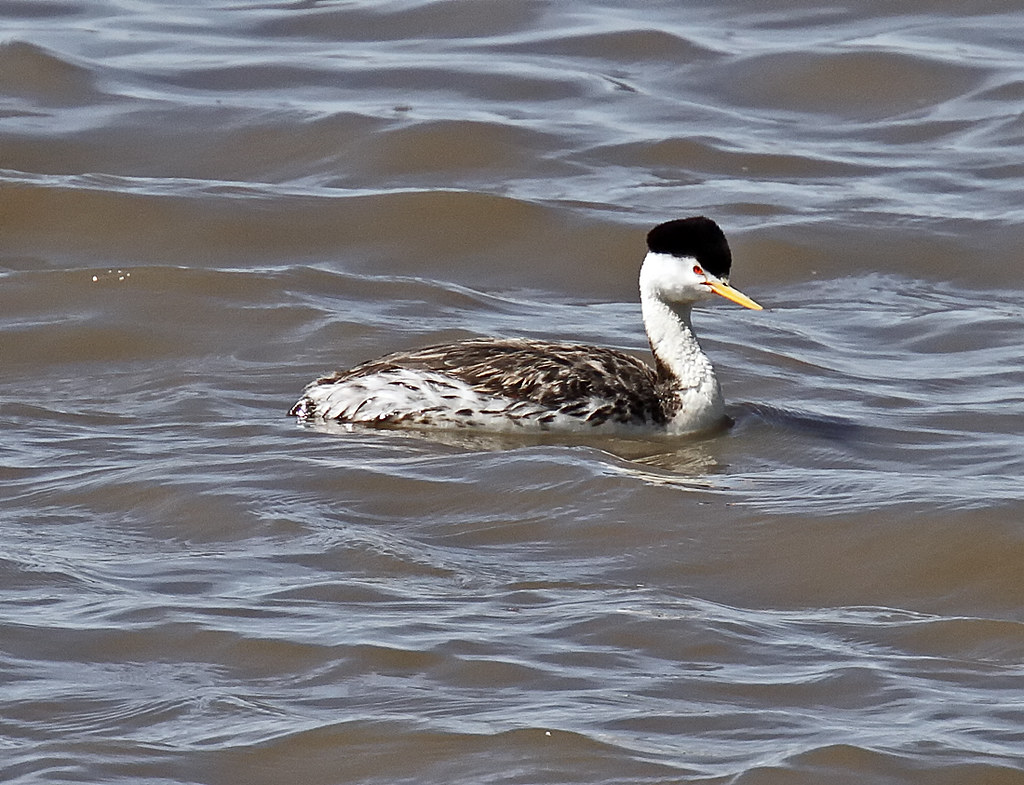
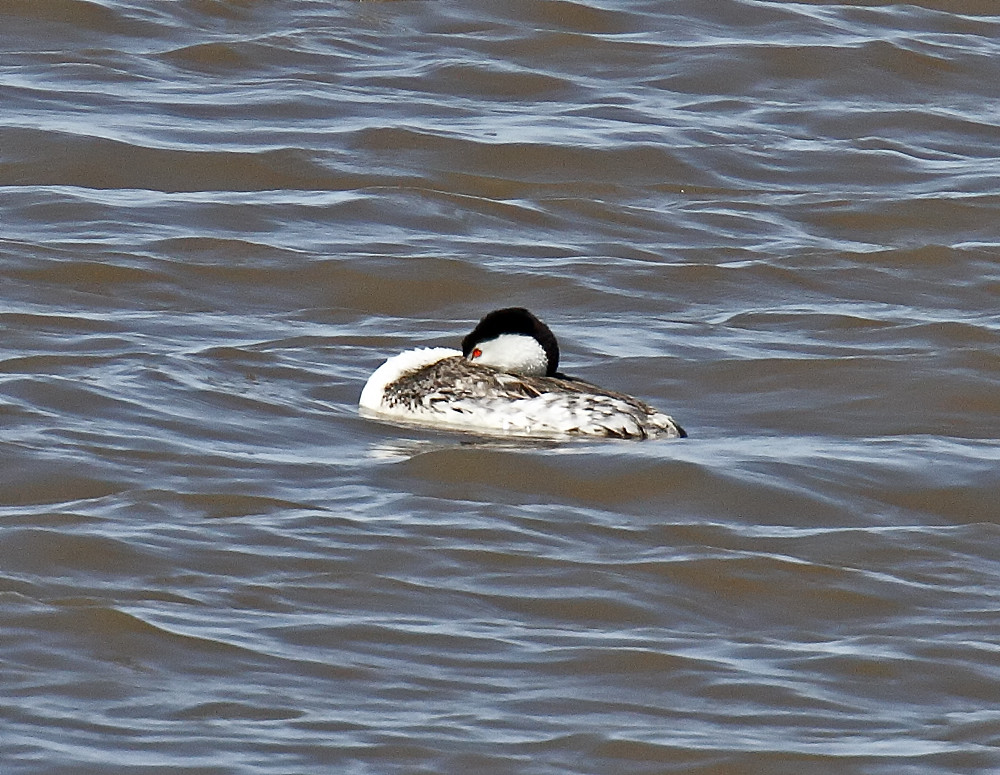
The following photo shows both Western and Clarke's Grebes.
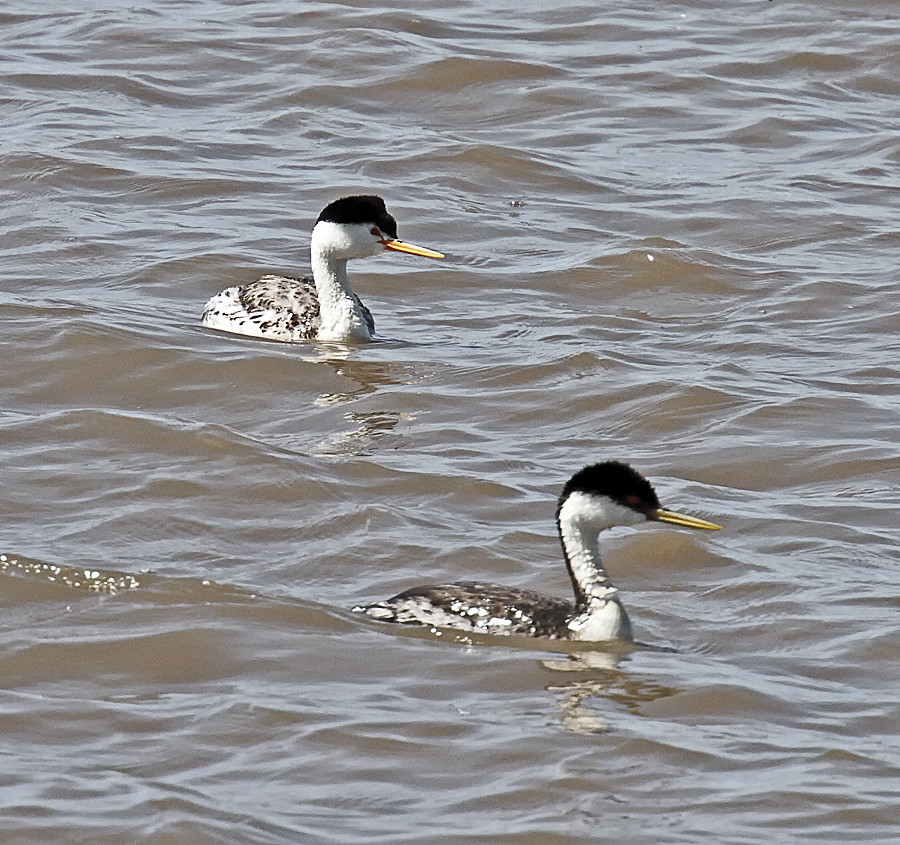
As a bonus below is a photo of a Least Grebe. This was taken in Texas where several were making themselves conspicuous by issuing loud calls while swimming.
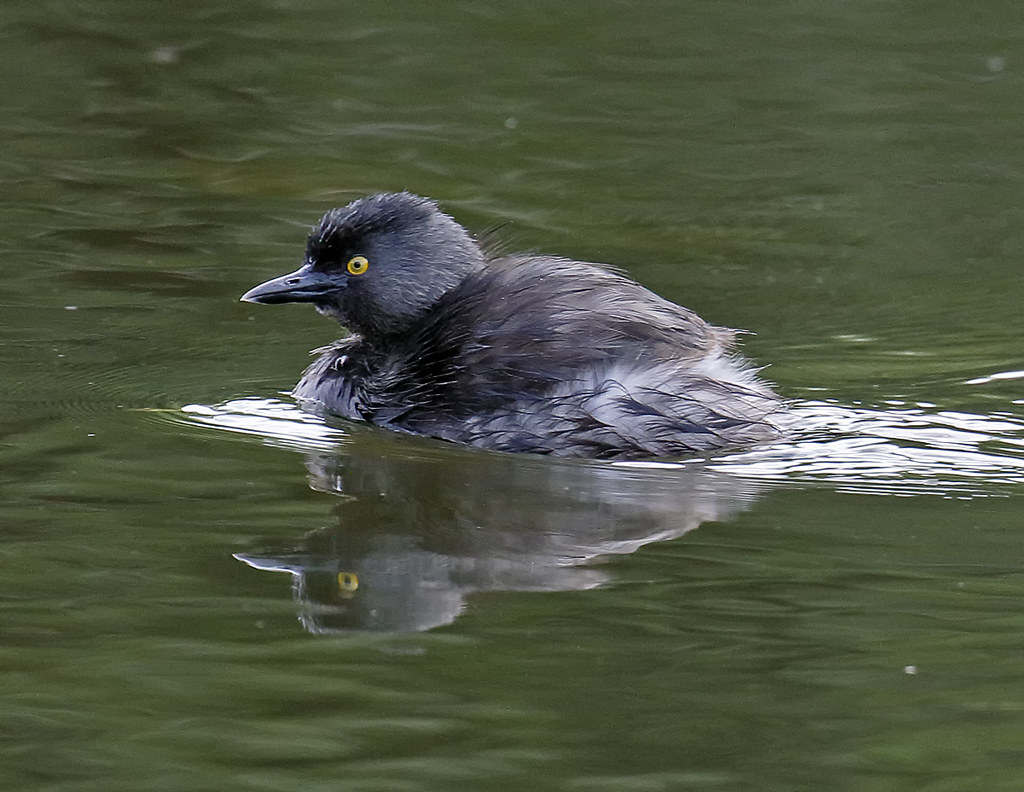
The Grebe most likely to be seen in many locations throughout the Lower Mainland is the Pied-billed Grebe. Some have nested close to Piper Spit at Burnaby Lake and I have seen pairs swimming in the outer ponds at Iona. It is the smallest Grebe in the area.




Another relatively common member of this family is the Horned Grebe. Currently these are present at the White Rock Pier and often come close to the Pier while diving for those green thingies they like to consume. These are curious birds and are very conscious of being looked at. They usually dive immediately when spotted. However, the don’t stay underwater for very long, so an observer can just wait them out. On one occasion, one followed me as I walked along the beach at Point Roberts. It was swimming about 10 feet from the shoreline and about 50 feet behind me. Whenever I turned around, it dove. However, after I walked some distance and turned around again, it was still following me – and still diving when I turned.
About this time of year, this species starts to show breeding plumage. During the Winter they are black/brown and white. However, their breeding colours are striking – black with gold horns. They migrate to their breeding lakes upon molting into full breeding plumage.




Another Grebe which looks similar to the Horned Grebe during the Winter is the Eared Grebe. It is slightly smaller, darker in colour, has a shorter bill, without the white at the end of the bill that the Horned Grebe has. This Grebe is relatively uncommon in the Lower Mainland. It frequents the same locations at the Horned Grebe. Its breeding plumage sports golden “ears” on a black body with red eyes. The breeding-plumage photos below were taken at an interior lake.




A larger Grebe that shows up at Blackie Spit, White Rock and Point Roberts is the Red-necked Grebe. During the Winter its neck most often appears a dirty gray. This Grebe also swims further away from the shoreline and its dives are longer and presumably deeper than the Grebes discussed above. About this time of year they begin to sport breeding plumage with their necks turning red and their bills more yellow. They linger for some time in the salt water before migrating to breeding lakes. Last year I caught a pair doing a mating dance at Point Roberts. They were turning and moving in unison and swimming higher up.



A Grebe which looks large is the Western Grebe. These also show up at White Rock, Point Roberts and Blackie Spit. They have long, skinny necks, a long yellow bill and a black cap. They often form large groups while migrating. One year I came across about 1,000 of them in Semiahmoo Bay, making haunting calls early in the morning. When resting, they don’t turn their heads back like most birds, but simply fold their long necks so that their head is still facing forward, but sitting on its back (which is shaped like a pie plate). Sometimes they come very close to the White Rock Pier. Once I caught one sleeping under the Pier. A year or so ago, there was some sort of food fish off the White Rock Pier and about 250 Western Grebes showed up to help harvest them.



A Grebe that looks very much like the Western Grebe is Clarke’s Grebe. The most noticeable difference is that the Clarke’s has some white appearing over its eyes whereas the Western Grebe has just black in that location. During the Winter we do see the occasional Clarke’s Grebe in the Lower Mainland. Most often seen off the White Rock Pier.


The following photo shows both Western and Clarke's Grebes.

As a bonus below is a photo of a Least Grebe. This was taken in Texas where several were making themselves conspicuous by issuing loud calls while swimming.


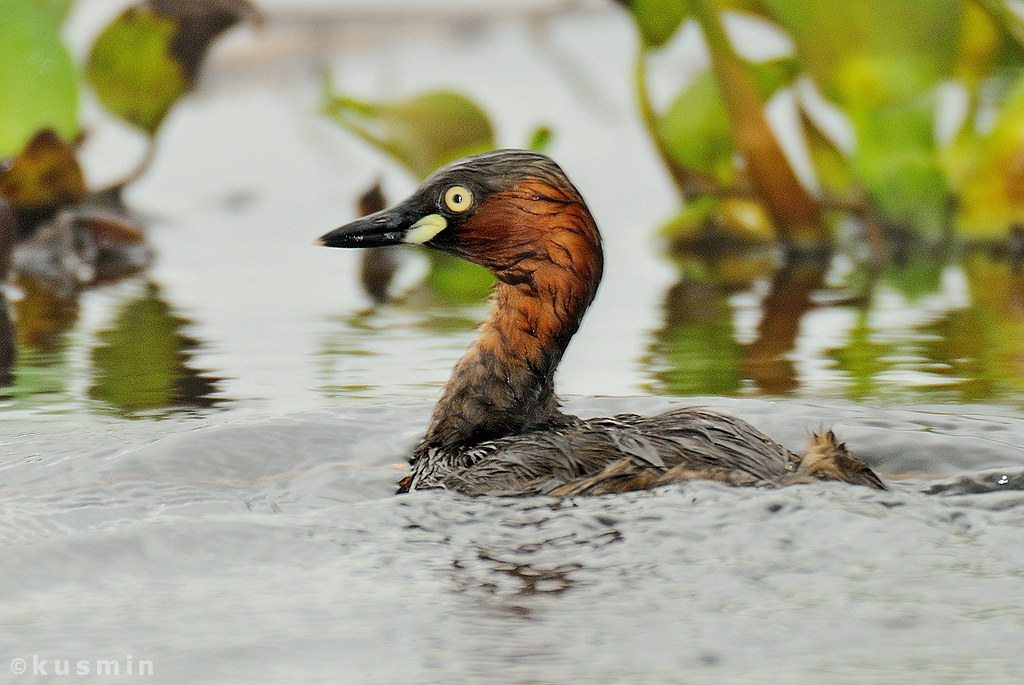
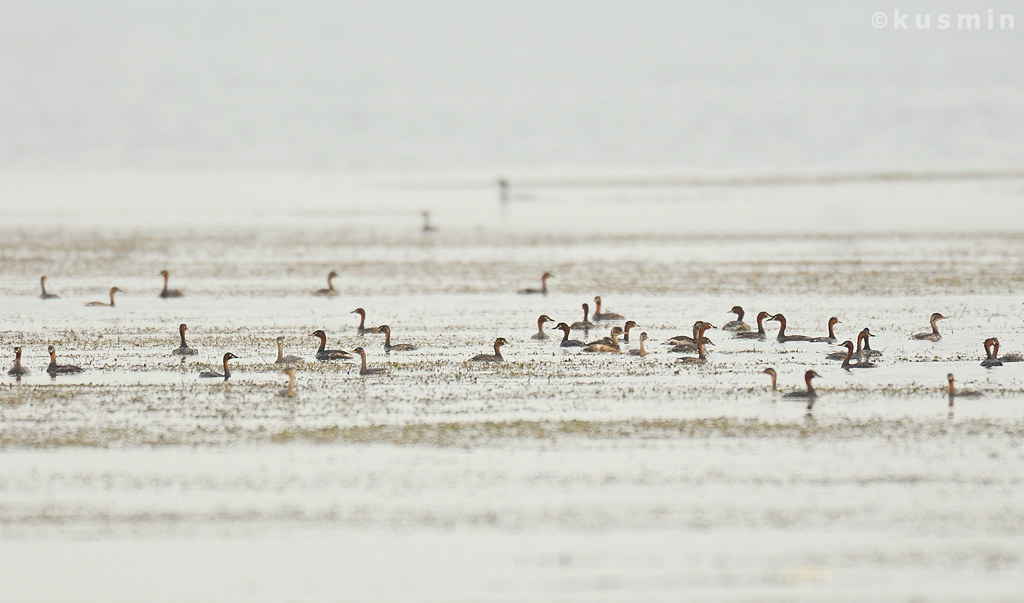

 - By GMcD
- By GMcD